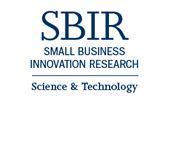Estimated Surface Decay of SARS-CoV-2 (virus that causes COVID-19)
on surfaces under a range of temperatures and relative humidity
Enter temperature and enter relative humidity. The resulting natural decay of SARS-CoV-2 is shown in the table below.
SARS-CoV-2 Surface Decay Calculator
COVID Stability:
| % Virus Decay | Hours | Days |
|---|---|---|
| 50% (half-life): | 11.32 | 0.47 |
| 99.99%: | 150.39 | 6.27 |
| 99.9999%: | 225.59 | 9.40 |
| 99.999999%: | 300.78 | 12.53 |
Relative humidity and temperature can be used to provide an estimated half-life for SARS-CoV-2 with this model with some degree of certainty. The predictive power is limited to temperature between 74°F-95°F and Relative Humidity between 20-60%. The formula below was developed in °C, but has been modified in the web calculator to use °F.

Background
- Preventing person-to-person spread of SARS-CoV-2 is the only means to reduce the impact of COVID-19 in the absence of an effective therapeutic.
- Transmission occurs primarily through respiratory droplets produced by talking, coughing and sneezing.
- Contact with contaminated surfaces and objects may also contribute to spread.
- SARS-CoV-2 will survive in saliva and respiratory fluids on surfaces for extended periods of time under certain conditions.
- DHS S&T has studied the stability of SARS-CoV-2 in simulated saliva, using droplets of varying size deposited on a non-porous surface under a range of temperature and RH conditions.
- Viral survival on surfaces is driven by temperature, relative humidity (RH), and matrix (e.g., bodily fluids).
- These data have been used to develop a predictive model to estimate virus decay under a limited range of environmental conditions.
- Testing performed on non-porous surfaces, specifically stainless steel, ABS plastic, and nitrile rubber.
- There was no significant difference found in the decay of the virus found between stainless steel ABS plastic, and nitrile rubber.
Model Caveats

- Infectious dose is unknown (how much makes a person sick)
- Virus shedding is unknown (how much a sick person puts into the environment)
- Contact Hazard (how much virus comes off from touching surfaces)
- Model can estimate virus decay at certain conditions: temperature (room temperature or 74°F to 95°F) and relative humidity from 20-60%, without exposure to direct sunlight.
S&T is partnering with CWMD to develop a tool that is easily accessible could be used by Occupational Safety and Health (OSH) professionals to support risk assessment, cleaning and disinfection in accordance with guidance provided by CDC and EPA including Guidance for Cleaning and Disinfecting: Public Spaces, Workplaces, Businesses, Schools, and Homes.
 Official website of the Department of Homeland Security
Official website of the Department of Homeland Security

















